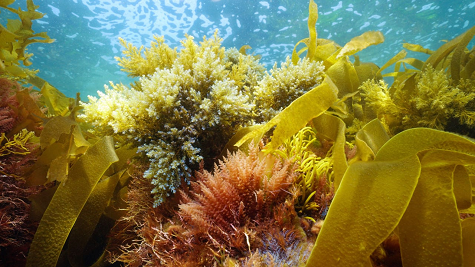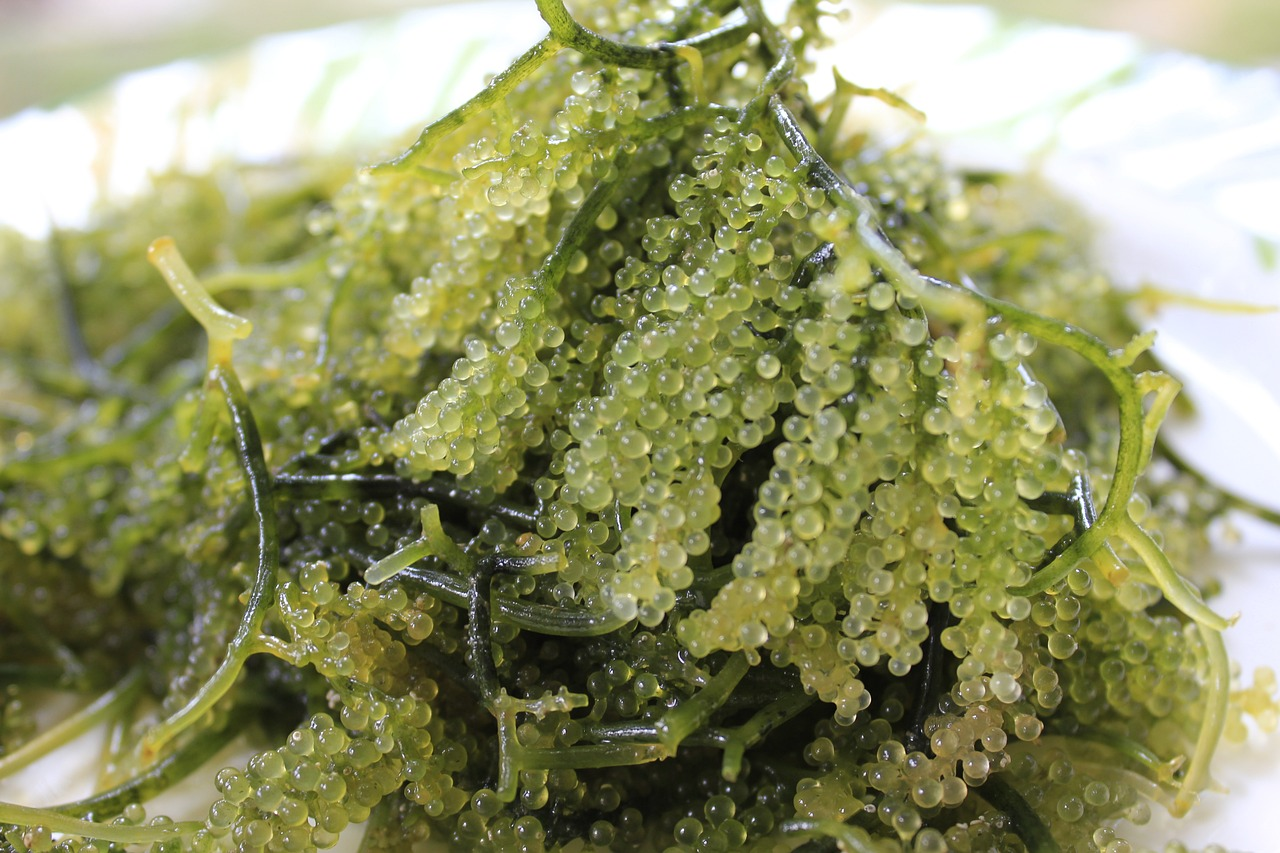Unit 13: Marine Plants
Unit 13: Marine Plants

Unit 13: Marine Plants

Unit 13: Marine Plants
This unit focuses on the variety and importance of marine plants. Students will study emergent and submergent marine plants, as well as investigate the single-celled phytoplankton and multicellular marine algae.
Plants, including aquatic plants, produce oxygen, and they also use oxygen. Here's how these processes work:
During a sunny day, dissolved oxygen in water is generally plentiful because photosynthesizing algae and aquatic plants are constantly releasing it into the water. Even though many other organisms are using the oxygen, there is an oxygen surplus.
After sundown, without sunlight, photosynthesis slows considerably, or even stops. So, in addition to the usual oxygen demands (from fish, macro-invertebrates, tadpoles, etc.), algae and plants are also pulling oxygen from the water. Too many plants or animals using the oxygen in the system can deplete it and create the potential for a fish kill, especially after several days of cloudy weather or low light when less photosynthesis takes place.
Student Goals
- Describe the process of photosynthesis.
- Differentiate between submergent and emergent marine plants.
- State examples of submergent marine plants.
- State examples of emergent marine plants.
- Explain why seaweeds are classified as marine algae.
- State products manufactured from marine algae.
Vocabulary
Lesson Reading

